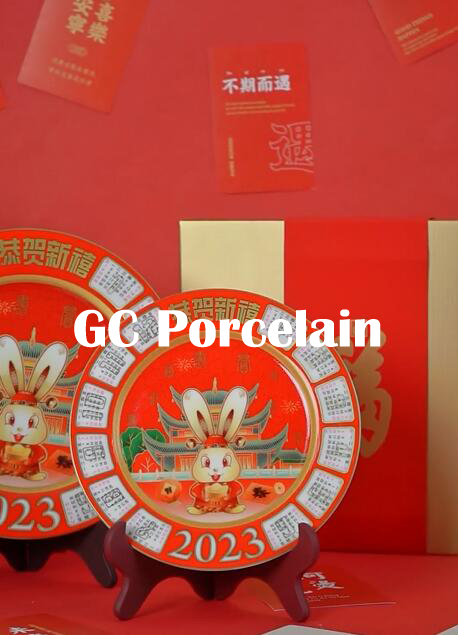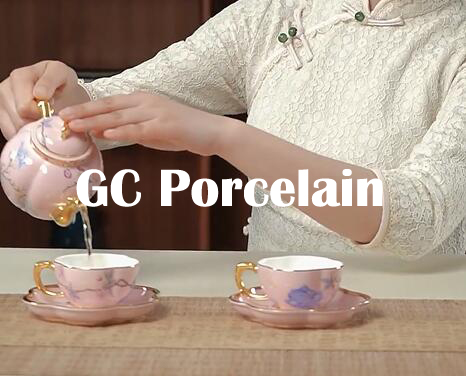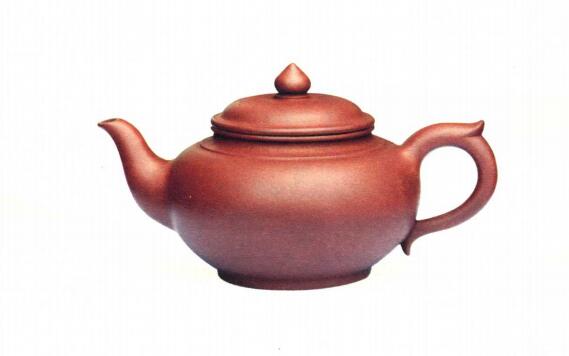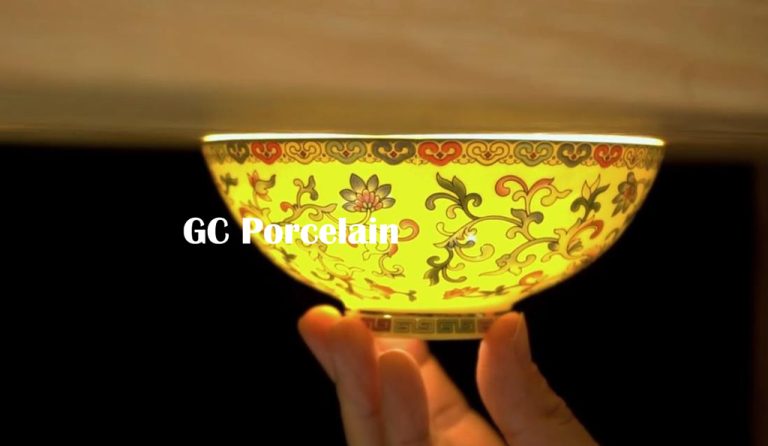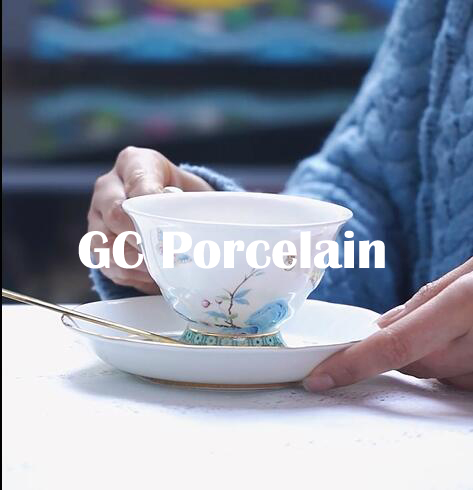The ceramic craftsmanship in China boasts a rich and renowned history, paralleled by its deep-rooted wine culture. Although I have forgotten the origins and acquisition times of the few small wine cups in my collection, their exquisite forms and intricate techniques reveal a trace of the development trajectory of China's ceramic industry. They serve as a testament to the exceptional craftsmanship and ingenuity of ancient Chinese artisans.
1.A Ming Dynasty wine cup with a deep circular foot glazed in sacrificial red. This cup has a diameter of 5.2 centimeters and a height of 3.1 centimeters, with a foot diameter of 2.8 centimeters. The mouth is slightly everted, and the deep circular foot features a carefully carved inner slope. The foot wall and the bottom of the cup each have a small piece of white glaze. This exemplifies the typical craftsmanship of the Ming Dynasty.

2.A Ming Dynasty chicken heart cup with blue and white exterior petal motifs and inner entwined floral patterns, inscribed with the mark of Emperor Yongle. This unique cup has a diameter of 6.7 centimeters and a height of 4.5 centimeters, with a bottom diameter of 2.1 centimeters and one cup rim having a small gap. Its exquisite form and meticulous craftsmanship showcase a double-ring pattern along the outer rim, a decorative band of 32 petal motifs encircling the lower abdomen, and a blue and white cord pattern below the circular foot. The inside of the rim displays a wave pattern, while the interior depicts six entwined floral motifs. The triple blue circles on the inner base bear the inscription 'Made in the Yongle Reign.' The absence of glaze on the base and the prominent chicken-heart protrusion are distinct features. The vivid blue color of the glaze is accentuated by rust marks resulting from imported cobalt material.

3.A Ming Dynasty blue and white petal motif cup with a small circular foot. This cup has a mouth diameter of 9.5 centimeters, a height of 8 centimeters, and a foot diameter of 2.5 centimeters. Its exterior rim features a money pattern, the lower abdomen displays a pattern of fourteen petals, and the circular foot bears a bold cord pattern. The inner rim boasts a scroll pattern, and the inner wall depicts five branches of lotus. Inside the double blue circles at the base, there are depictions of chrysanthemums. Similar in design to the petal motif cup with a chicken heart, this cup's main distinction lies in its smooth mouth, which has a noticeable sharpness when touched.

4.A Qing Dynasty blue and white landscape and figure pattern cup from civilian kilns. This dainty cup has a mouth diameter of 6.2 centimeters, a height of 3.4 centimeters, and a bottom diameter of 2.9 centimeters. With half of its exterior left white, the other half is adorned with blue and white depictions of landscapes, trees, and two figures. The image is fresh and elegant, with a balanced intensity of blue color. The distinct layers and lines showcase the finesse of the Kangxi Dynasty's 'blue and white five-color' painting style. The 'treasured collection' inscription in blue and white confirms its origin from civilian kilns, representing the ceramic craftsmanship of the Kangxi period.

If you have any questions or need to custom dinnerware service, please contact our Email:info@gcporcelain.com for the most thoughtful support!


